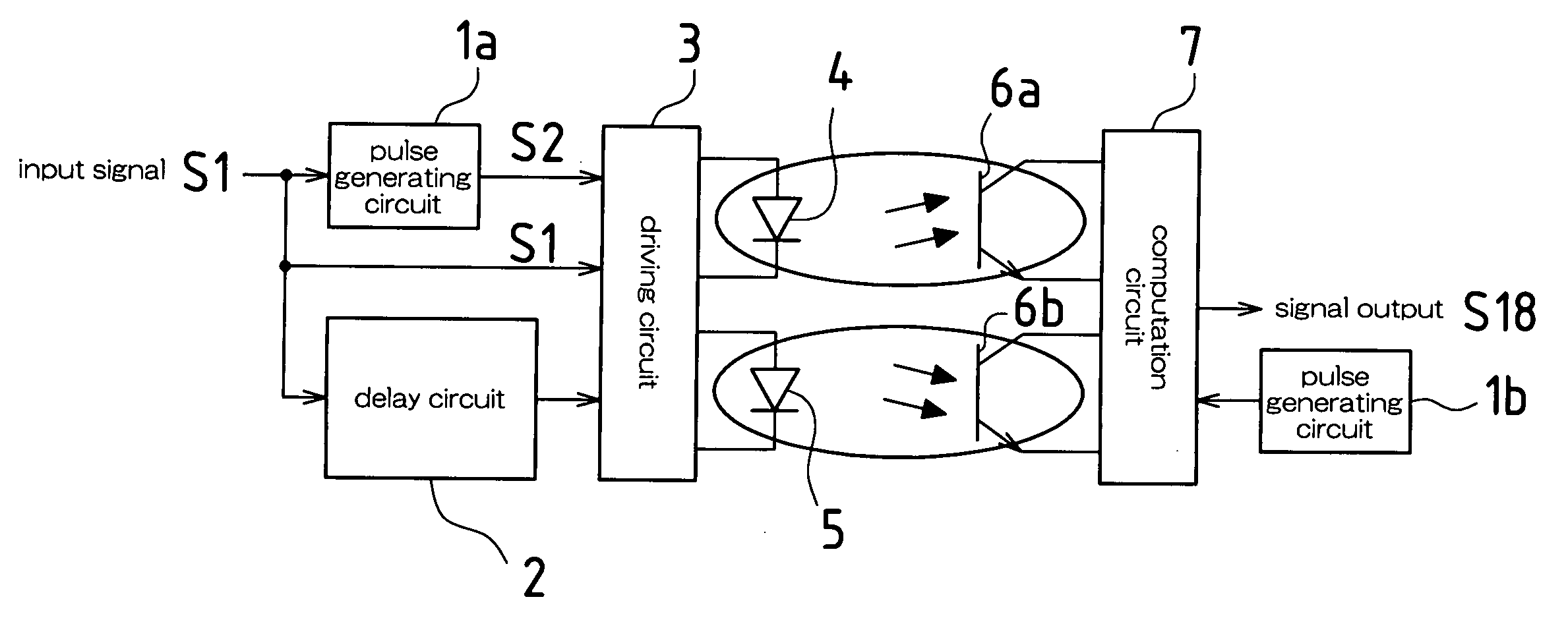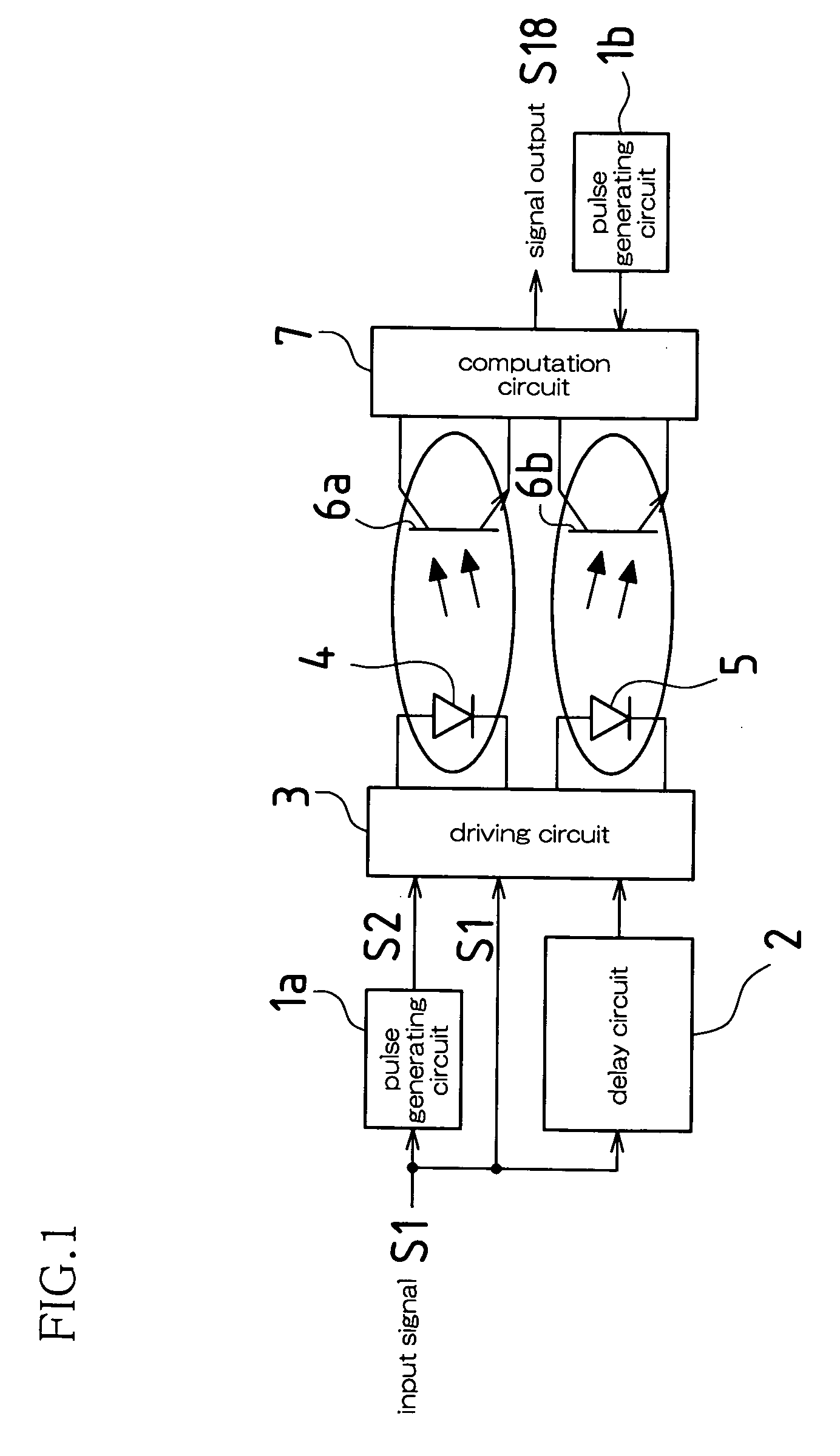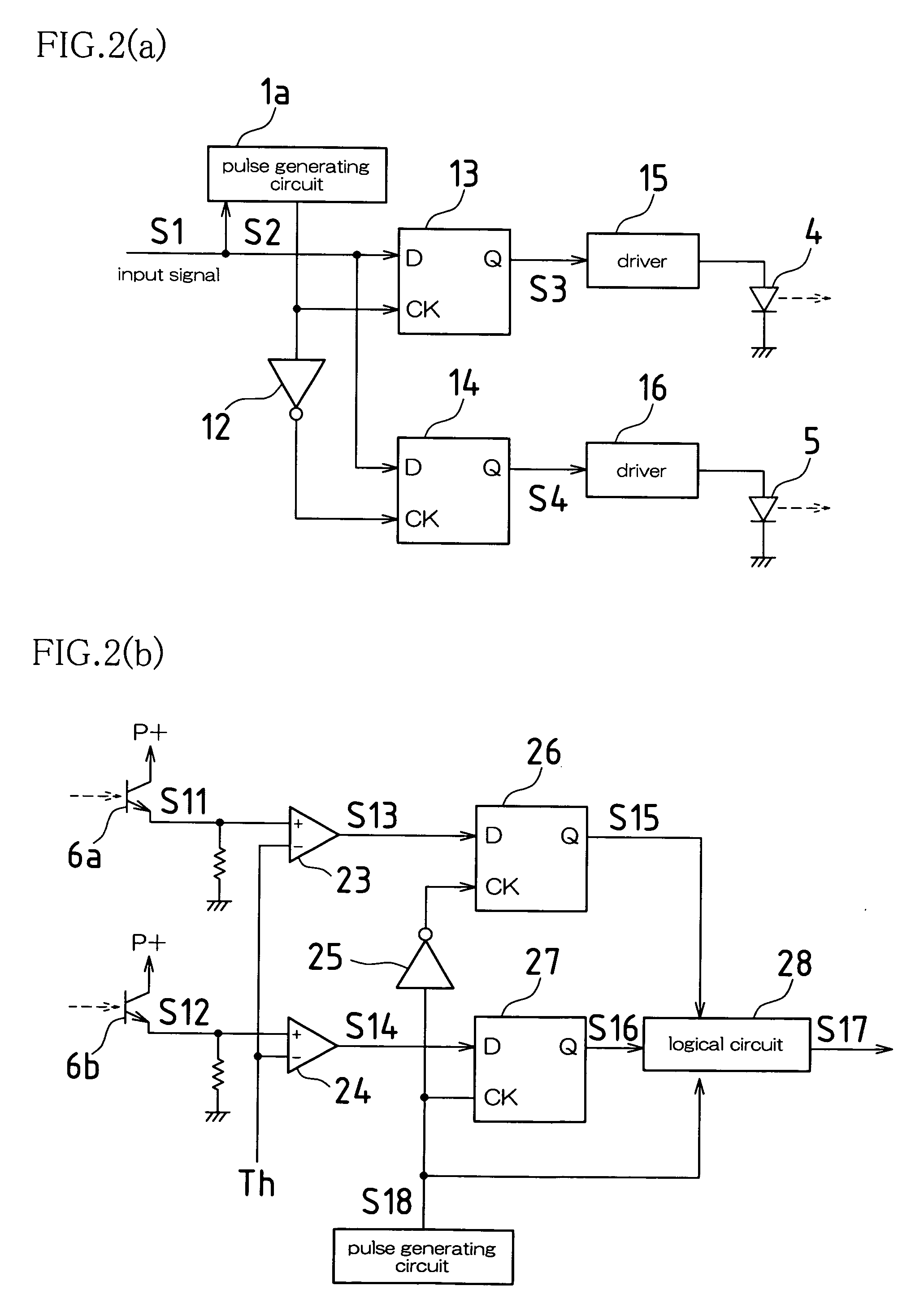Optical coupling device and electronic apparatus using same
- Summary
- Abstract
- Description
- Claims
- Application Information
AI Technical Summary
Benefits of technology
Problems solved by technology
Method used
Image
Examples
embodiment 1
[0025]FIG. 1 is a functional block diagram of an optical coupling device according to Embodiment 1.
[0026] In the optical coupling device of Embodiment 1, an input side is configured with a pulse generating circuit 1a, a delay circuit 2, a driving circuit 3, and two light emitting elements 4 and 5 connected to the driving circuit 3, and an output side is configured with two light receiving elements 6a and 6b connected to a computation circuit 7, and a pulse generating circuit 1b.
[0027] An input signal S1 is input to the driving circuit 3 and to the delay circuit 2, and is further input to the pulse generating circuit 1a, which generates a clock pulse signal. The pulse generating circuit 1a generates a clock pulse signal S2 with a high speed synchronized with the input signal S1, and this is input to the driving circuit 3. The delay circuit 2, after delaying the input signal S1 for ½ the pulse of the clock pulse signal S2, inputs the input signal S1 to the driving circuit 3. The dri...
embodiment 2
[0043] Next is a description of an optical coupling device according to Embodiment 2 of the present invention.
[0044]FIG. 4 is a functional block diagram of the optical coupling device according to Embodiment 2 of the present invention.
[0045] In Embodiment 2, the two LEDs 4 and 5 have different wavelengths, and with respect to the output side (the light receiving side), light receiving faces are manufactured at two locations on a single chip, and by providing sensitivity to the wavelengths of LEDs 4 and 5 in the each respective light receiving face, the light receiving element 6 can be formed with a single chip. The driving method in Embodiment 2 is the driving method according to the timing chart shown in FIG. 3, and so a description thereof is omitted here.
[0046] In above Embodiment 1, because two pairs of a light emitting element and a light receiving element need to be manufactured in a single package, and in order to prevent erroneous operation it is necessary to design such ...
PUM
 Login to view more
Login to view more Abstract
Description
Claims
Application Information
 Login to view more
Login to view more - R&D Engineer
- R&D Manager
- IP Professional
- Industry Leading Data Capabilities
- Powerful AI technology
- Patent DNA Extraction
Browse by: Latest US Patents, China's latest patents, Technical Efficacy Thesaurus, Application Domain, Technology Topic.
© 2024 PatSnap. All rights reserved.Legal|Privacy policy|Modern Slavery Act Transparency Statement|Sitemap



